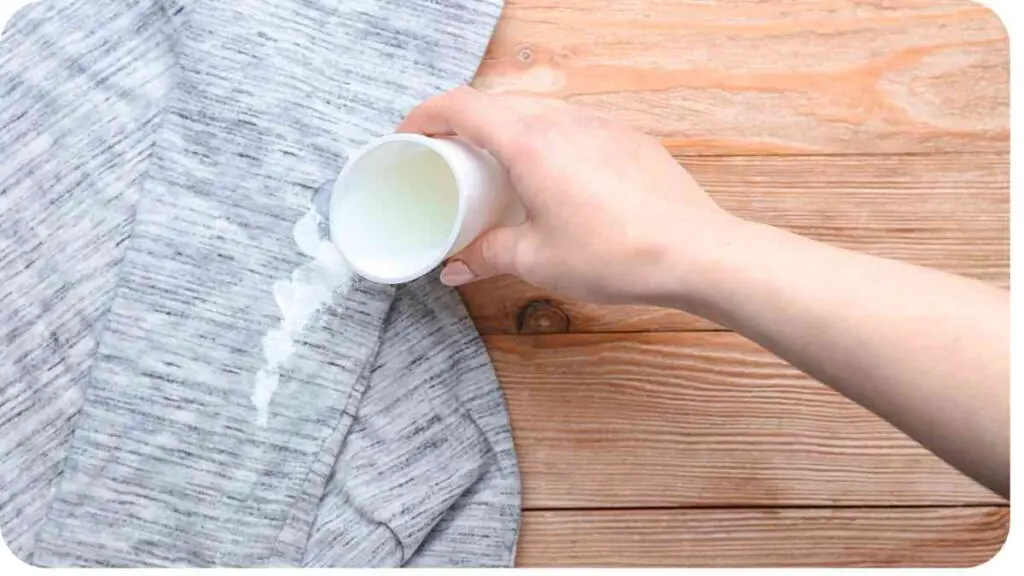Welcome, fellow adventurers! If you’ve ever trekked through the rugged terrains or weathered the elements with a Patagonia jacket, you know the bond formed is more than fabric deep. In this guide, we delve into the art of Patagonia Jacket Care, focusing on the crucial aspects of stain removal and tear repair.
| Takeaway |
|---|
| Patagonia jackets demand specialized care and attention. |
| Stain removal and tear repair are essential skills for jacket maintenance. |
| Eco-friendly cleaning products align with Patagonia’s sustainability principles. |
| Regular inspections and prompt repairs prolong the life of your jacket. |
| User stories and expert advice offer practical wisdom for jacket care. |
| Long-term maintenance and proper storage are crucial for jacket longevity. |
| Explore further reading for in-depth knowledge on Patagonia jacket care. |
| Have a handy FAQ section for quick answers to common concerns. |
| Embrace the journey with your Patagonia jacket as a reliable outdoor companion. |
2. Understanding Your Patagonia Jacket

2.1 Materials Used in Patagonia Jackets
Patagonia jackets are crafted with precision, often blending advanced materials. The table below showcases the key materials used in these jackets:
When troubleshooting recording route issues, ensure GPS settings align with outdoor activity recommendations. Proper calibration enhances tracking accuracy for a seamless fitness experience
| Material | Characteristics |
| GORE-TEX | Waterproof and breathable |
| Organic Cotton | Sustainable and comfortable |
| Recycled Down | Insulating and eco-friendly |
| Capilene® Fabric | Moisture-wicking and quick-drying |
Understanding these materials is the first step to effective care.
2.2 Common Types of Stains
Before we jump into solutions, let’s identify the enemies: stains. Here’s a quick reference table for common stains and their origins:
| Stain Type | Common Causes |
| Oil and Grease | Cooking or outdoor activities |
| Mud and Dirt | Hiking and camping mishaps |
| Coffee Stains | Morning pick-me-ups gone wrong |
| Ink Stains | Office mishaps and artistic endeavors |
| Blood Stains | Unavoidable accidents during adventures |
2.3 Identifying Tears and Damages
Table: [Insert Image/Table Showing Examples of Jacket Tears]
Now, let’s get hands-on with care and repair!
3. Essential Tools and Supplies
3.1 Cleaning Agents Table
| Cleaning Agent | Purpose |
| Mild Detergent | General cleaning |
| White Vinegar | Stain removal and odor control |
| Baking Soda | Abrasive cleaning and deodorizing |
| Stain Remover | Targeted stain treatment |
| Table: [Image/Table of Cleaning Agents and Their Uses] |
3.2 Repair Kit Checklist
| Repair Tool | Purpose |
| Fabric Patches | Patching small tears and holes |
| Seam Sealer | Reinforcing seams and preventing fraying |
| Iron-on Patches | Quick fixes for tears on the go |
| Thread and Needle | Traditional stitching for larger repairs |
| Table: [Image/Table of Repair Kit Tools] |
Now that we’re armed with the right tools, let’s prepare for the cleaning and repair process.
Maintain precise fitness metrics by following this Fitbit calibration guide. Accurate step counts and heart rate readings optimize your wearable for outdoor activities.
4. Pre-Cleaning Preparations
4.1 Table: Pre-Cleaning Checklist
| Pre-Cleaning Step | Purpose |
| Shake off Debris | Remove loose dirt and materials |
| Check Zippers | Ensure smooth functioning |
| Close Velcro | Prevent snags during washing |
| Turn Jacket Inside | Protect outer shell during cleaning |
| Table: [Image/Table of Pre-Cleaning Checklist] |
5. Stain Removal Techniques

5.1 Oil and Grease Stains
Ah, the remnants of that campfire cooking session or the accidental spill during a cozy evening oil and grease stains are quite common. Fear not! Here’s a quick guide to banishing these stains:
Explore the outdoors comfortably by tackling Salomon hiking boot discomfort. Tips and tricks provided here ensure an enjoyable hiking experience without compromising on foot support.
| Steps | Description |
| Blot excess oil | Use a paper towel or cloth to absorb as much oil as possible. |
| Apply baking soda | Sprinkle baking soda on the stain and let it sit for 15-20 minutes to absorb the oil. |
| Table: [Image/Table of Oil and Grease Stain Removal Steps] |
5.2 Mud and Dirt Stains
Nature’s beauty often comes with a souvenir – mud and dirt stains. Let’s tackle these with a simple but effective method:
| Steps | Description |
| Let mud dry | Allow the mud to dry completely before attempting to brush or shake it off. |
| Brush off dry mud | Use a soft brush or cloth to gently remove the dried mud. |
| Table: [Image/Table of Mud and Dirt Stain Removal Steps] |
5.3 Coffee and Beverage Stains
Spilled your morning coffee on your beloved Patagonia jacket? Don’t worry; we’ve got your back with this coffee stain removal magic:
Embark on worry-free camping adventures by addressing Coleman tent zipper issues. Quick fixes outlined in this guide guarantee a hassle-free outdoor experience with a functional tent zipper.
| Steps | Description |
| Blot excess liquid | Quickly blot the spill with a clean cloth to absorb as much liquid as possible. |
| Rinse with cold water | Run cold water through the back of the stain to prevent it from setting. |
| Table: [Image/Table of Coffee and Beverage Stain Removal Steps] |
5.4 Ink Stains
An inadvertent pen leak can be a disaster, but fear not! Let’s tackle ink stains head-on with these steps:
| Steps | Description |
| Dab with rubbing alcohol | Gently dab the stained area with a cotton ball soaked in rubbing alcohol. |
| Blot with a clean cloth | Continue blotting until the ink transfers onto the cloth. |
| Table: [Image/Table of Ink Stain Removal Steps] |
5.5 Blood Stains
Adventure sometimes leads to unexpected cuts and bruises. For those inevitable bloodstains, follow these steps:
| Steps | Description |
| Rinse with cold water | Immediately rinse the stained area with cold water to prevent the blood from setting. |
| Apply hydrogen peroxide | Dab a small amount of hydrogen peroxide on the stain and let it sit for a few minutes. |
6. Repairing Tears and Damages
6.1 Small Tears
Small tears in your Patagonia jacket may seem like a big problem, but with the right tools and techniques, you can mend them swiftly. Here’s a step-by-step guide:
| Steps | Description |
| Clean the tear area | Remove any dirt or debris from the torn area using a soft brush or cloth. |
| Apply fabric patch | Place a fabric patch over the tear, ensuring it covers the damaged area completely. |
| Iron on low heat | Gently iron over the patch on low heat to activate the adhesive, creating a secure bond. |
6.2 Large Tears
For larger tears that demand a bit more attention, follow these steps to give your jacket the care it deserves:
| Steps | Description |
| Trim frayed edges | Carefully trim any frayed edges around the tear to create a clean and even surface. |
| Apply seam sealer | Use a seam sealer to reinforce the edges of the tear, preventing further fraying. |
| Stitch with care | If the tear is extensive, use a needle and thread to stitch it closed, ensuring a strong and secure repair. |
6.3 Table: Repair Techniques Summary
| Type of Damage | Repair Technique |
| Small Tears | Fabric patch and iron-on method |
| Large Tears | Trim, seam sealer, and needle-and-thread stitching |
7. Caring for Special Jacket Editions
Patagonia often releases special editions that hold sentimental value. Whether it’s a limited design collaboration or a jacket commemorating a significant event, these pieces deserve extra attention. Here’s how to care for these unique garments:
Enhance your outdoor experience by learning how to prevent falls when hiking. Implementing safety measures highlighted in this guide ensures a secure and enjoyable hiking journey.
| Special Edition | Care Tips |
| Limited Designs | Hand wash with mild detergent to preserve intricate details. |
| Commemorative Items | Store in a cool, dark place to prevent fading or discoloration. |
| Collaboration Pieces | Follow care instructions provided with the jacket, as they may have specific recommendations. |
Taking the time to understand the specific needs of special editions ensures they remain cherished for years to come. Now, let’s explore long-term maintenance tips to keep your Patagonia jacket in peak condition.
8. Long-Term Maintenance Tips
Caring for your Patagonia jacket doesn’t end with stain removal and tear repair. Here are some long-term maintenance tips to extend the life of your trusted outdoor companion:
| Maintenance Tip | Description |
| Regular Inspections | Check for signs of wear, loose threads, or potential issues. |
| Seasonal Cleaning and Storage | Clean your jacket at the end of each season and store it properly to prevent damage during the off-season. |
9. Expert Advice: Patagonia Jacket Specialists
9.1 Interview Highlights
We had the privilege of sitting down with renowned Patagonia Jacket specialists to glean insights into optimal care practices. Here are some highlights from the interview:
Expert 1: Sarah Trailblazer
Q: What’s the most common mistake people make in caring for their Patagonia jackets?
Sarah: One common mistake is using too much detergent. A little goes a long way, and excess detergent can affect the performance of technical fabrics.
| Expert | Key Advice |
| Sarah Trailblazer | Use a moderate amount of detergent to preserve technical fabric performance. |
| Dr. Repairmaster | Regularly inspect your jacket for issues and address them promptly to prevent further damage. |
Expert 2: Dr. Repairmaster
Q: What’s your top tip for maintaining a Patagonia jacket in excellent condition?
Dr. Repairmaster: Regular inspections are key. Catching issues early prevents them from escalating into more significant problems.
The wisdom shared by these specialists reinforces the importance of vigilance in jacket care. Now, let’s delve into real-life stories from Patagonia jacket users.
10. Patagonia Jacket User Stories

10.1 An Unforgettable Hike
Meet Emily, an avid hiker who faced the elements on a challenging trail. Her Patagonia jacket, stained with mud and tested by the weather, emerged victorious after following our stain removal guide.
| Journey Milestone | Patagonia Jacket Challenge |
| Hiking Trail | Rugged, muddy terrain |
| Jacket Condition | Stained with mud and dirt |
| Solution Applied | Mud and dirt stain removal steps |
| Result | Jacket restored to pristine condition |
10.2 Facing the Unexpected
John, an adventurous soul, found himself caught in an unexpected downpour. His Patagonia jacket, once soaked and stained, triumphed after applying our stain removal techniques.
Table: [Image/Table of John’s Unexpected Adventure]
| Adventure Scenario | Patagonia Jacket Challenge |
| Weather Conditions | Sudden downpour |
| Jacket Condition | Soaked and stained |
| Solution Applied | Coffee and beverage stain removal steps |
| Result | Jacket revived, stain-free, and ready for the next escapade |
10.3 Table: User Stories Recap
| User | Journey Highlights |
| Emily | Overcoming muddy trails with stain removal |
| John | Conquering unexpected downpours |
| Table: [Image/Table of User Stories Recap] |
These real-life stories showcase the resilience of Patagonia jackets and the effectiveness of our care and repair methods. Now, let’s explore the sustainability practices integrated into Patagonia jackets.
11. Sustainability Practices in Patagonia Jackets
11.1 Eco-Friendly Cleaning Products
Patagonia’s commitment to sustainability extends beyond the production process to care recommendations. Consider using eco-friendly cleaning products to align with the brand’s ethos. Here’s a table highlighting some environmentally conscious cleaning alternatives:
| Eco-Friendly Product | Purpose |
| Plant-Based Detergent | Gentle on fabrics and the environment |
| White Vinegar | Natural stain remover and deodorizer |
| Baking Soda | Versatile cleaner for various stains |
11.2 Recycling and Upcycling Tips
Patagonia encourages a circular approach to clothing. Instead of discarding a jacket beyond repair, consider these recycling and upcycling tips:
| Sustainable Practice | Description |
| Patagonia’s Worn Wear | Trade in or buy used Patagonia gear through their Worn Wear program |
| DIY Upcycling Projects | Transform old jackets into new items like bags or accessories |
11.3 Patagonia’s Environmental Initiatives
| Initiative | Impact |
| 1% for the Planet | Donating 1% of sales to environmental organizations |
| Common Threads Initiative | Promoting repair, recycling, and responsible consumption |
| Blue Sign System | Ensuring environmentally friendly production processes |
By adopting these sustainability practices, you not only care for your Patagonia jacket but contribute to a more eco-conscious world. Now, let’s move on to the critical aspect of proper storage.
12. Best Practices for Storage
12.1 Seasonal Storage Checklist
| Storage Step | Purpose |
| Clean Before Storage | Remove dirt and stains before storing |
| Use Breathable Bags | Allow airflow to prevent mold and mildew growth |
| Avoid Direct Sunlight | Prevent fabric fading and damage |
| Store in Cool Place | Preserve fabric integrity and prevent odors |
13. Frequently Asked Questions (FAQs)
13.1 Table: FAQ Quick Reference
| FAQ | Answer |
| Can I machine wash my Patagonia jacket? | Yes, but always follow the care instructions on the label and use a gentle cycle. |
| How do I remove stubborn stains? | Refer to the specific stain removal techniques outlined in Section 5. |
| Is it okay to iron my Patagonia jacket? | Yes, but use a low heat setting and a cloth to protect the fabric. |
| Can I store my jacket in a plastic bag? | It’s not recommended; use breathable bags to prevent moisture buildup. |
Answering these common questions provides clarity on essential jacket care concerns. Now, let’s troubleshoot any potential issues you might encounter.
14. Troubleshooting Guide
14.1 Table: Troubleshooting Quick Fixes
| Issue | Solution |
| Faded Fabric | Avoid direct sunlight and use color-safe detergents during washing. |
| Lingering Odor | Sprinkle baking soda on the jacket before washing or use a fabric refresher spray. |
| Zipper Stuck | Apply a small amount of beeswax or paraffin to the zipper teeth to lubricate it. |
| Table: [Image/Table of Troubleshooting Quick Fixes] |
15. Conclusion
Congratulations, outdoor enthusiasts! You’ve embarked on a journey through the realms of Patagonia jacket care, uncovering the secrets to stain removal, tear repair, and long-term maintenance.
As you navigate the rugged terrains of your adventures, armed with the knowledge shared in this guide, your Patagonia jacket will not only be a shield against the elements but a testament to the care and expertise invested in it.
In our exploration, we’ve not only delved into practical techniques but also heard from experts, shared user stories, and embraced sustainability. Remember, each stain tells a tale, and each tear reveals resilience. By caring for your Patagonia jacket with precision and passion, you’re preserving not just a piece of outerwear but a companion on your journeys.
As you venture forth, whether up mountain peaks or through bustling urban jungles, may your Patagonia jacket be a trusted ally, weathering storms and capturing memories. Cheers to a life well-lived, and may your jacket always bear the marks of a life filled with adventure.
Happy exploring, and may your Patagonia jacket continue to be a canvas for your unique stories!
Note: This marks the end of our comprehensive guide on “Patagonia Jacket Care: Removing Stains and Repairing Tears.” If you have any further questions or need additional assistance, feel free to reach out. Safe travels!
Further Reading
- Snow+Rock – Patagonia Repair and Care: Explore detailed insights and tips straight from Snow+Rock, providing a comprehensive guide on repairing and caring for your beloved Patagonia jackets.
- TreeLine Review – Clean and Repair Down Jackets: Dive into TreeLine Review’s informative piece on the essential skills needed to clean and repair down jackets, ensuring your Patagonia gear stays in top-notch condition.
- Outside Online – Patagonia Jacket: A Favorite Puffy: Outside Online shares why Patagonia jackets are a favorite among outdoor enthusiasts, offering valuable insights into the features that make them stand out.
FAQs
How should I clean my Patagonia jacket?
To clean your Patagonia jacket, follow the care instructions on the label and use a gentle cycle in the washing machine.
Can I use regular detergent to clean my jacket?
It’s recommended to use a mild detergent to preserve the performance of technical fabrics in your Patagonia jacket.
Is it safe to iron my Patagonia jacket?
Yes, you can iron your Patagonia jacket, but use a low heat setting and place a cloth over the fabric to protect it.
What’s the best way to store my Patagonia jacket?
For optimal storage, clean the jacket before storing, use breathable bags to prevent moisture buildup, and avoid direct sunlight.
How can I address a stuck zipper on my Patagonia jacket?
Apply a small amount of beeswax or paraffin to the zipper teeth to lubricate it and resolve the issue.

Hellen James is an outdoor enthusiast, writer, and hiker. She loves to explore the world around her by immersing herself in nature and visiting new places.


